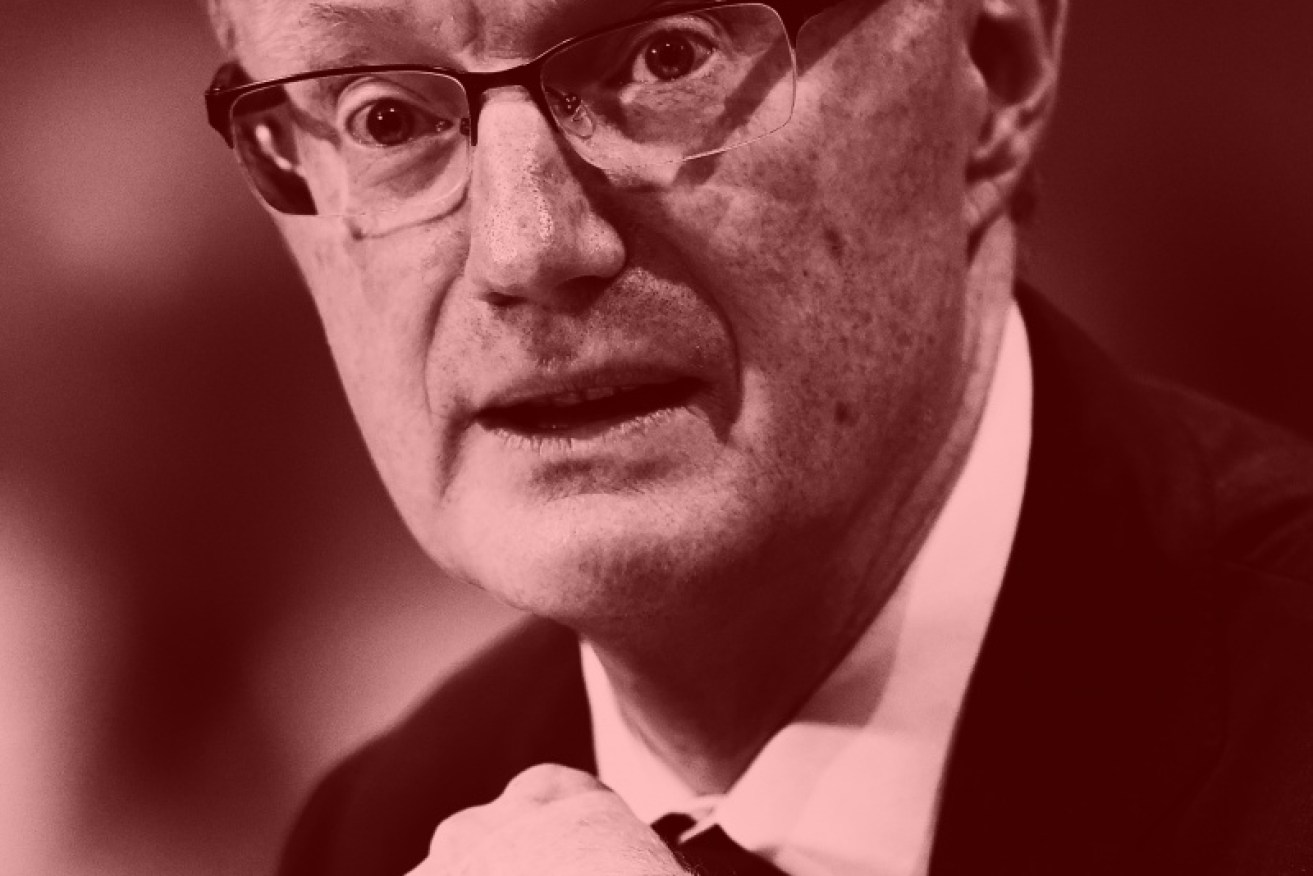There are twin perils for the Australian economy

RBA governor Philip Lowe warns of rising household debt, and says income growth is crucial. Photo: Getty
Australians are deeper in debt than ever, and our wages are growing at the slowest pace on record – a potential recipe for disaster.
In a speech on Tuesday night, Reserve Bank governor Philip Lowe warned that Australia’s debt-to-income ratio is the worst it has ever been, weakening our ability to withstand a financial shock.
“Debt levels, relative to income, are high in Australia and are much higher than they once were. Currently, household debt is equivalent to 185 per cent of annual household disposable income, a record high and up from around 70 per cent in the early 1990s,” Governor Lowe told the Melbourne audience.

This Reserve Bank chart shows that net debt (with household stockpiles of cash and savings deducted) is far less alarming than total household debt. But Governor Lowe warned that “the households with the debt typically are not the same ones with the large deposits”.
Like any good central banker, his tone was cautious, not alarmist. He left open the question of whether this level of debt is sustainable, but importantly he noted that wage growth is a crucial part of this calculation.
“We can never know with certainty exactly what level of debt is sustainable. It depends on income growth, lending standards and asset prices. But it surely must be the case that the higher is the debt, the greater is the risk.”
The Governor’s warning was probably a nod to the jobs data due to be released the next morning.
If we count back 12 months from September, annual wages grew a paltry 1.9 per cent, the Australian Bureau of Statistics (ABS) revealed on Wednesday – a deceleration from the previous 2.1 per cent.
That was the weakest growth since the ABS started tracking the wage price index back in 1997. The index measures movement in underlying wages by calculating the change in wage and salary costs across a range of occupations.
Governor Lowe was careful not to talk down the economy. And he stressed that he did not see any specific financial crises on the horizon.
It was a call for vigilance. Our high debt levels leave us exposed, without a much-needed buffer, in perhaps the same weakened position as US households before the global financial crisis.

Wages grew just 1.9 per cent over the last 12 months, just above inflation of 1.3 per cent. Photo: Getty
“In the United States when the recession hit in 2008 some households found that they had simply borrowed too much. What followed was a period of defaults by some, less new borrowing and faster repayment of some debt. The result was a more severe downturn and a more protracted recovery than otherwise would have occurred.”
Labor leader Bill Shorten responded to Governor Lowe’s speech by saying Australians are “maxing the plastic”.
“That’s why we need more than slogans from the government,” Mr Shorten told reporters in Queensland.
Sluggish wage growth is clearly weighing on the minds of our central bankers. The Reserve Bank board discussed it at length during its November board meeting.
“Members noted that there was significant uncertainty about the outlook for consumption growth given uncertainty about households’ expectations of their income growth and the influence of these expectations on their spending and saving decisions. This was particularly pronounced for households with significant debt,” minutes released on Tuesday revealed.
Without a buffer zone, it would seem Australian households are ill-equipped to spend their way out of any looming recession.

Labor leader Bill Shorten backed the RBA governor’s assessment. Photo: Getty
It means the burden of boosting consumption in a crisis would fall on the shoulders of business and the federal government, both of which have so far ignored the Reserve Bank’s furious tugging at their pursestrings (in the form of record-low interest rates).
But others are optimistic. JP Morgan economist Tom Kennedy said the bank is forecasting that we’ve hit the bottom, and that wage growth should now pick up.
“We think most of the bad news is actually behind us now, and that as economic growth picks up in 2017 and beyond, you should start to see wage growth actually firm a little bit and move higher,” Mr Kennedy told The New Daily.
The economist attributed slow wage growth to the labour market’s reliance on part-time and service sector jobs, typically at the middle-to-lower end of the pay spectrum. Yet another reminder of the problem of underemployment trend.
If the global economy does recover in 2017, as many predict, then US President-elect Donald Trump will be well-placed to claim the credit, as The New Daily has reported.








